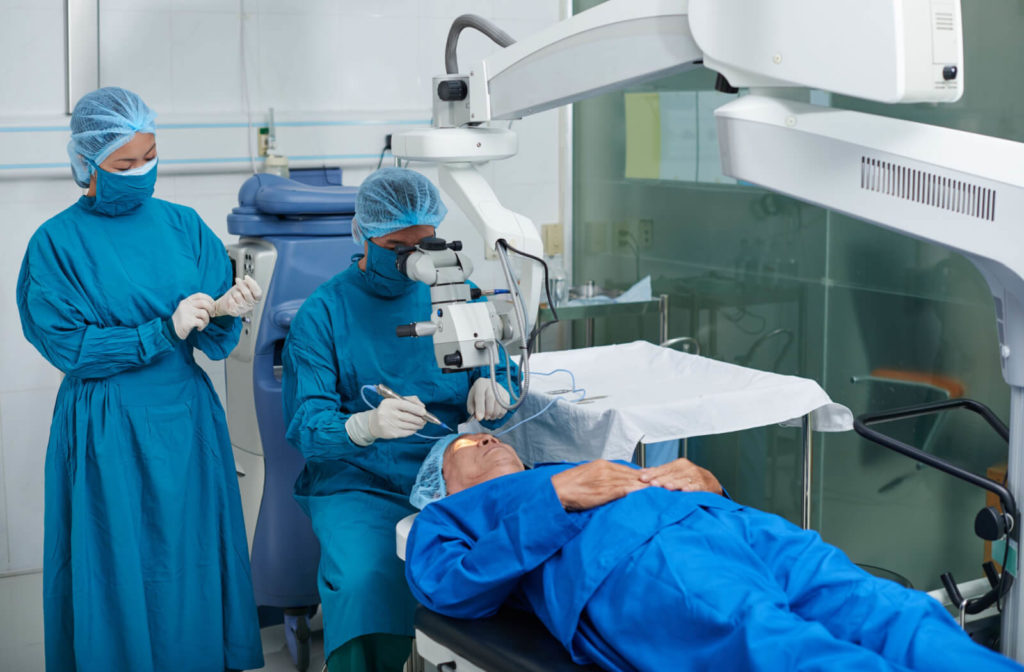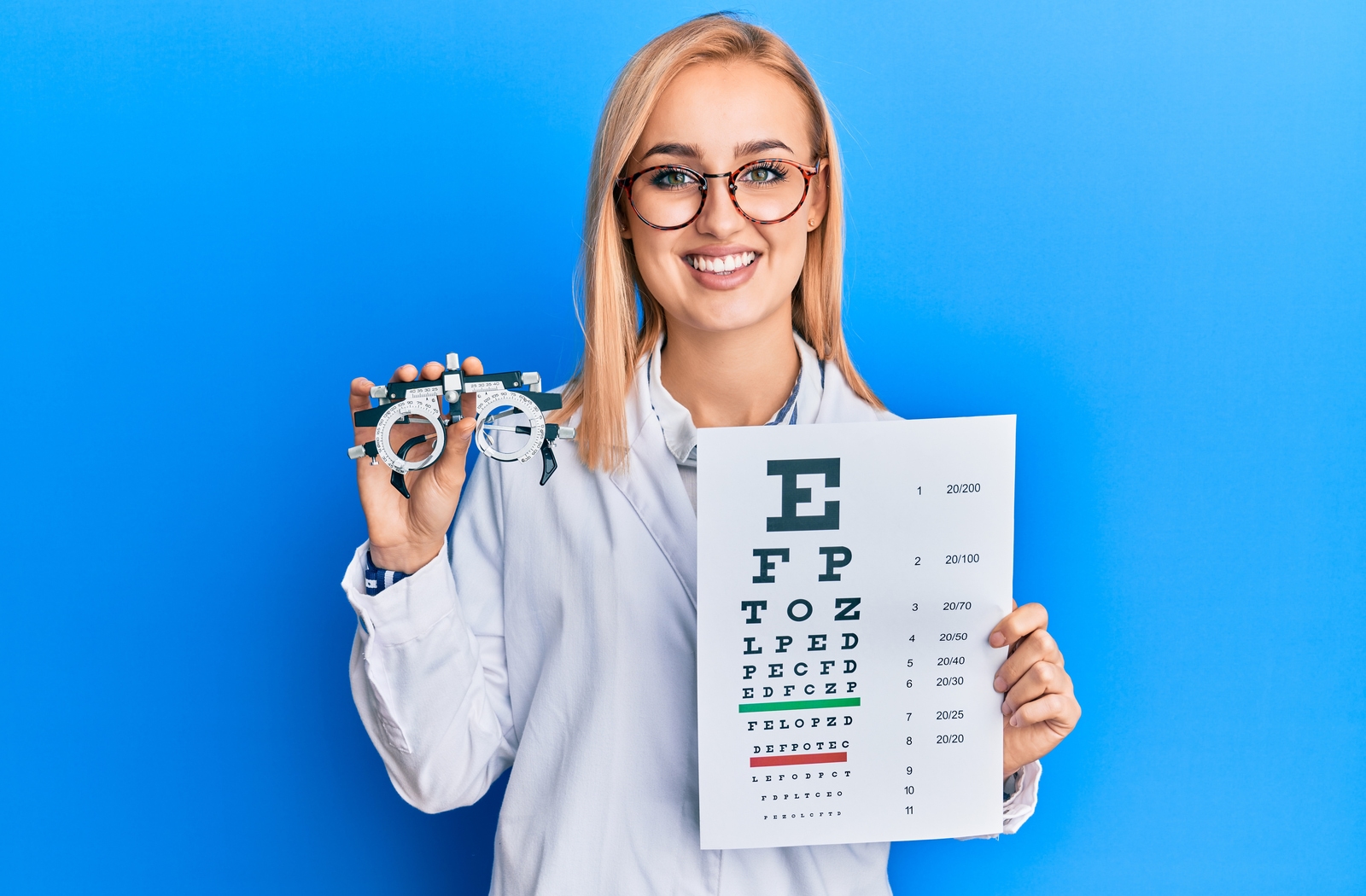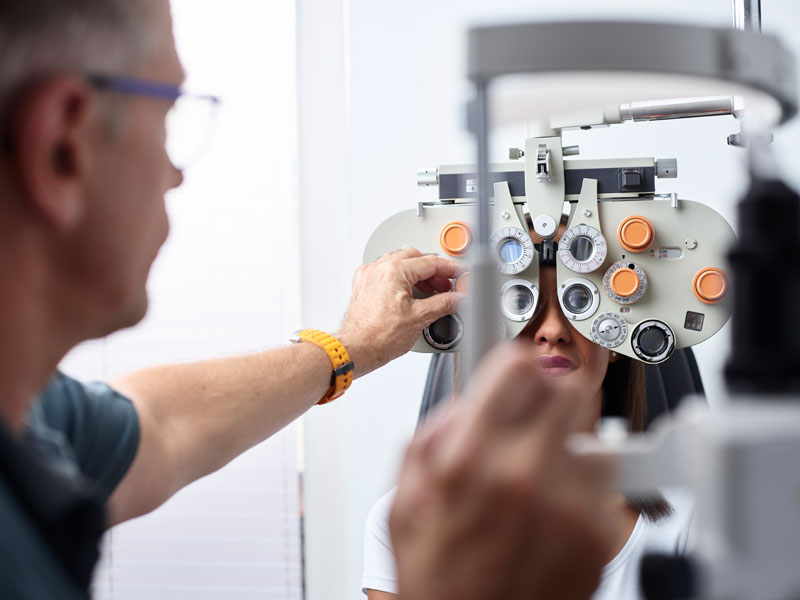Exploring the current Technological Developments in Optometry and What They Mean for Optometrists
In the ever-evolving field of optometry, current technological innovations are improving exactly how specialists come close to eye treatment. From the precision of Optical Coherence Tomography to the nuanced understandings provided by AI-driven diagnostic devices, these developments are setting new requirements in individual assessment and treatment. Teleoptometry is poised to redefine access, making certain that competence transcends geographical restrictions. As these advancements permeate the technique, optometrists are encountered with the obstacle of embracing these tools to enhance person outcomes. Yet, the inquiry remains: exactly how will these technological shifts redefine the duties and duties within the occupation?
Developments in Diagnostic Equipment
Progressing the area of optometry, technologies in analysis tools have revolutionized the way eye care specialists examine and identify visual impairments and eye conditions. The past decade has actually experienced significant technological advancements, enabling even more thorough and precise assessments.
An additional key advancement is the intro of innovative corneal topography systems, which map the surface area curvature of the cornea with accuracy. These tools are particularly helpful for fitting get in touch with lenses and detecting corneal conditions. Electronic retinal imaging has actually changed traditional ophthalmoscopy, providing in-depth, breathtaking sights of the retina that facilitate detailed visual assessments.
The advancement of wavefront aberrometry has actually also been critical, allowing the evaluation of refractive mistakes with unparalleled precision (Optometrist Chino). This technology assists in customizing corrective lenses and enhancing surgical outcomes for refractive surgeries. Collectively, these diagnostic innovations encourage eye doctors to supply premium client care, ensuring very early intervention and tailored therapy approaches, inevitably boosting aesthetic health and wellness end results
AI in Person Administration
Structure on the structure of cutting-edge diagnostic devices, the unification of artificial knowledge (AI) in person management represents a transformative leap for optometry. AI systems are increasingly used to improve effectiveness, accuracy, and customization in client care. By examining large amounts of information, AI can determine patterns and predict potential eye problems, enabling eye doctors to tailor treatments a lot more successfully. This capability is crucial in taking care of chronic eye conditions such as glaucoma and diabetic retinopathy, where very early discovery and continuous surveillance are essential.
Furthermore, AI-driven systems facilitate structured person interactions and management procedures. Automated scheduling, online appointments, and customized follow-up strategies not just improve client satisfaction however additionally optimize time monitoring for specialists. These systems can triage patients based upon the urgency of their conditions, ensuring that those in essential requirement receive punctual interest.
Furthermore, AI boosts decision-making by providing optometrists with evidence-based suggestions and treatment pathways. By integrating information from digital wellness documents, AI tools offer insights that inform scientific choices, reducing the risk of errors and enhancing person outcomes. As AI continues to develop, its function in individual monitoring will likely expand, reshaping the landscape of optometric treatment.
Developments in Retinal Imaging
In the realm of optometry, retinal imaging has witnessed amazing technological developments that are improving analysis abilities and individual treatment. Advancements such as Optical Comprehensibility Tomography (OCT) and fundus digital photography have actually revolutionized how optometrists examine the retina and picture. OCT, specifically, gives high-resolution, cross-sectional pictures of the retina, enabling the in-depth evaluation of its layers. This capability is invaluable for early discovery and monitoring of conditions like glaucoma, diabetic retinopathy, and age-related macular deterioration.
Improved imaging methods like OCT angiography are further refining diagnostic accuracy. This non-invasive technique maps blood circulation in the retina, supplying essential understandings right into vascular health and wellness without the need for color injections. Furthermore, flexible optics innovation is being integrated right into retinal imaging systems to fix eye aberrations, providing extraordinary photo clearness. Such innovations promote the recognition of min retinal adjustments that might signify illness development.
Moreover, advancements in synthetic intelligence are increasing retinal imaging by enabling automatic evaluation of large datasets. These systems help eye doctors in determining patterns indicative of pathology, thus boosting analysis precision and performance. Jointly, these technologies are transforming retinal imaging into a cornerstone of modern-day eye care, boosting results and increasing therapeutic possibilities.
Teleoptometry's Expanding Function
Teleoptometry is progressively coming to be an important element of eye treatment, driven by advancements in digital interaction and diagnostic tools. As optometry welcomes electronic makeover, teleoptometry helps with remote assessments, allowing optometrists to extend their solutions past standard borders. This is particularly advantageous in rural and underserved locations where accessibility to specialized eye treatment is frequently minimal. By leveraging high-resolution video conferencing and advanced retinal imaging, eye doctors can perform thorough eye exams from afar, ensuring prompt diagnosis read review and therapy.
The combination of artificial intelligence (AI) further enhances teleoptometry, enabling the analysis of visual information and assisting in the detection of eye problems such as glaucoma and diabetic retinopathy. AI-powered algorithms can quickly analyze complex imaging information, offering optometrists with valuable insights that strengthen scientific decision-making.
Moreover, teleoptometry sustains continuity of care through seamless combination with digital wellness records (EHRs), allowing optometrists to maintain detailed individual histories. When consulting with various experts., this ensures that people get tailored and regular care also.
Despite these benefits, challenges stay, including making certain data safety and security and managing individual expectations. Nonetheless, teleoptometry represents a significant stride towards more easily accessible, efficient, and patient-centered eye care. As innovation advances, its role is positioned to increase better.

Future Fads in Eye Treatment
A myriad of innovative trends is readied to reshape the future of eye treatment, driven by technical improvements and the progressing needs of individuals. One substantial pattern is the assimilation of man-made knowledge (AI) in diagnostics, which promises to improve the accuracy and performance of eye exams. AI algorithms can analyze large quantities of data from retinal pictures, potentially detecting conditions like diabetic person retinopathy and glaucoma earlier than traditional methods.
Furthermore, tailored medicine is obtaining traction in optometry, with hereditary testing notifying tailored treatment strategies. This method intends to maximize patient results by tailoring interventions to specific genetic accounts. Wearable modern technology, such as smart contact lenses, is additionally coming up, offering real-time tracking of intraocular stress or sugar levels, hence providing continual understandings right into ocular and systemic wellness.
The fostering of augmented reality (AR) and virtual truth (VIRTUAL REALITY) in training and person education is one more arising trend. These modern technologies supply immersive experiences that can improve understanding and abilities both for clients and eye doctors. As these fads progress, eye doctors must remain abreast learn this here now of technological developments to supply cutting-edge care, making sure enhanced individual end results and fulfillment in the dynamic landscape of eye care.
Final Thought

Jointly, these analysis innovations encourage eye doctors to deliver superior client treatment, making certain early intervention and customized treatment methods, inevitably enhancing visual wellness end results.

As these technologies proceed to develop, eye doctors should adjust and integrate them into technique, eventually maximizing workflow efficiency and elevating the criterion of eye treatment supplied to clients.
Comments on “Comprehending the Duty of Your Eye Doctor in Preserving Vision”